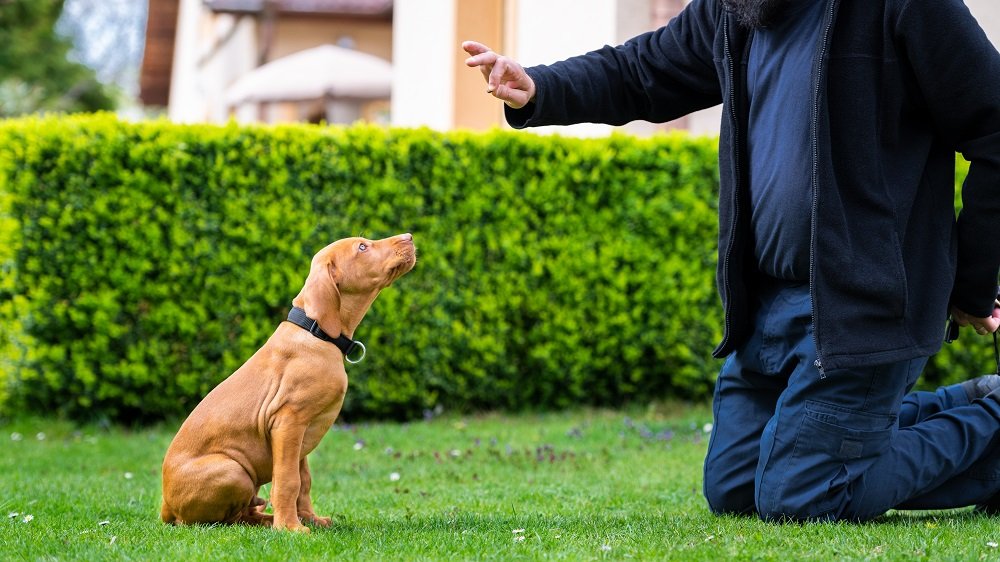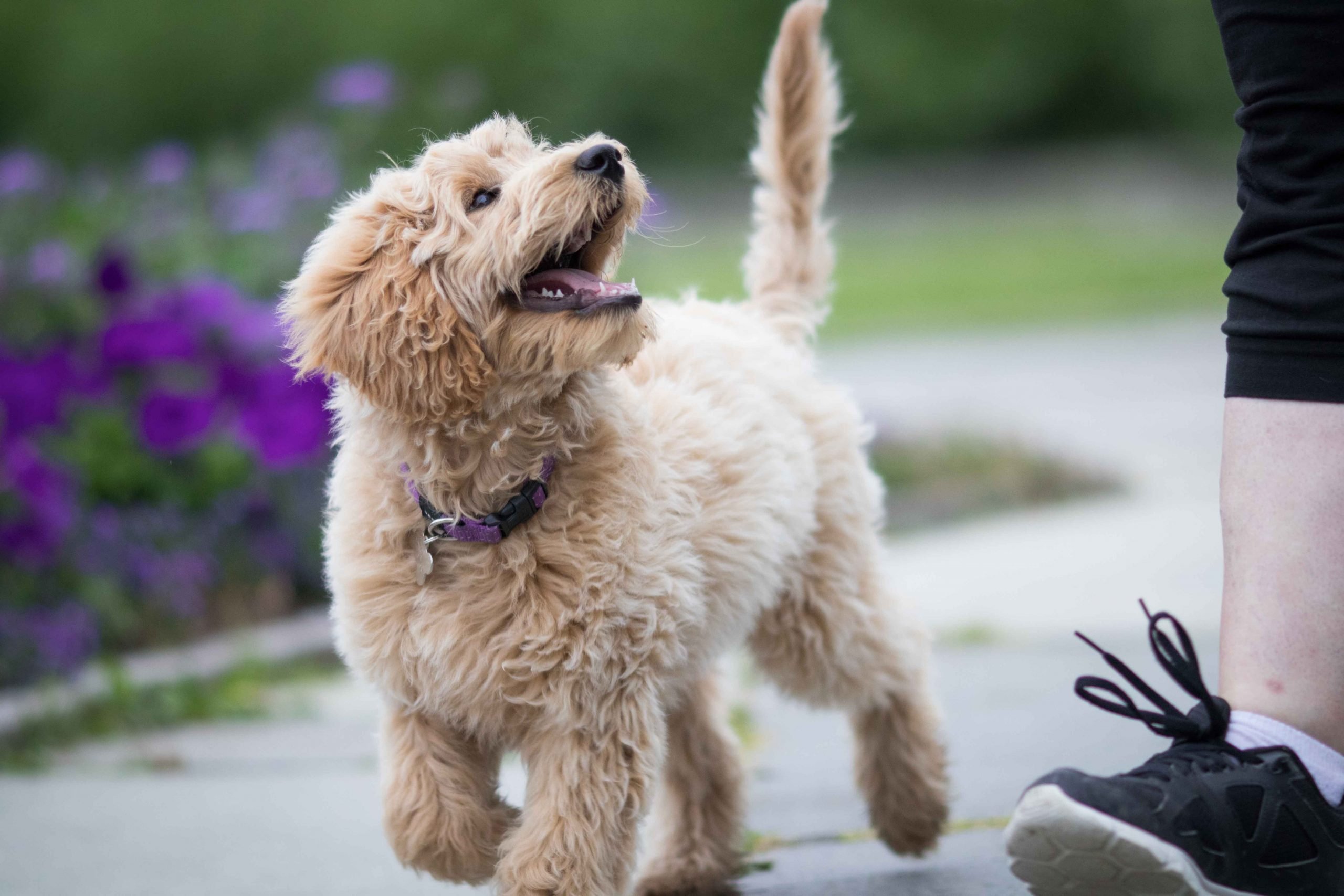This page contains affiliate links. This means that we may get a small commission for recommending products, if you choose to click on something and buy it. This does not cost you anything, but we wanted to be honest and let you know!
(Last Updated On: 6th August 2022)Like humans, dogs tend to react adversely to various situations, but having a reactive dog does not necessarily mean that the dog is aggressive.
Some dogs will react to another dog, to a person, or an object. The dog will respond by barking, growling, lunging, or other patterns of behavior. Although the dog might not be aggressive, it can sometimes look like the dog is.
This reactivity can occur in any dog at any time; if you have a dog that tends to be reactive, we have listed six ways in which you can help to calm your reactive dog.
Table of Contents
Know What The Triggers Are For Your Reactive Dog
It is important that you help your dog by knowing what their possible triggers are. Knowing what might trigger your dog will allow you to limit the number of triggers that your pet encounters, which will lower your dog’s stress.
# 1 Manage Known Triggers For Your Reactive Dog
When you are out and about with your dog, always be on the lookout for what might be a trigger for them. For example, if you know that one of your dog’s triggers is other dogs, try to avoid them.
If you are walking your pet through the neighborhood and learn which other houses have dogs that might be out in their yards, avoid those areas.
Cross the street, take a different route or do whatever else you need to minimize your dog’s exposure to those triggers. When you are walking with your dog, be aware of what is in front of you and what is behind you.
As you are walking, plan an exit strategy in case you come across an unexpected situation. It will be up to you to be aware of the triggers that your pet might come across other dogs if that is one of your pet’s triggers.
# 2 Have The Type Of Harness For Your Reactive Dog That Gives You Control
Your dog will feel much less anxious on walks when they know that you are in control. With a reactive dog, you will not want a retractable leash that goes out 15 or 20 feet in front of you.
You will want to keep your pet close at hand and be able to keep them under control when they see their triggers.
Some of The Best Harness For Large Dogsand some of The Best Small Dog Harness will help you to maintain control while walking your pet. These leashes allow you to control the situation by controlling your dog so that they don’t get hurt.
# 3 Block Your Reactive Dog’s Triggers Visually When You Are Able
If you have a dog who goes crazy when they see the mailman or when another dog or person walks by your house, there are ways to stop your dog from being reactive by blocking their view of that particular trigger.
If your dog gets fixated at the windows over the triggers that he sees outside, consider putting window film over the window so that your pet does not see that trigger. There are window films that are frosted so that light still comes in but makes anything outside hard to see. You don’t have to cover the entire window, but just up to the area that your pet can see out.
# 4 Don’t Allow Your Reactive Dog To Run The Fence Line
If your dog does fence running when outside, you need to take steps to stop that behavior. Running the fence line is a behavior that tends to escalate with time. This habit can become habitual and even addictive over time. The high arousal level that is occasioned by fence running can cause frustration in a dog. That frustration can turn into aggression over time.
You can try changing how your dog feels about the trigger on the other side of the fence using a training technique that is a behavior modification method based on conditioning. To do so, keep your dog on a leash and at a distance from the fence.
Every time the trigger that causes the fence running to manifest itself happens, give your dog a favorite treat. A treat that is exclusively used for these sessions. After a while, your dog should make the connection that the treats appear when the trigger is present. Instead of dreading the trigger, your pet will look forward to it.
# 5 Address Your Relative Dog’s Triggers With Behavior Adjustment Training
A reactive dog is not a bad dog; they are just acting in a primitive way. Their whole body is on high alert. It is as if they are in a perpetual state of fight-or-flight. That brings high cortisol levels and adrenaline into their system that the dog does not know how to respond to.
To help counteract this, your dog needs positive experiences from a safe distance under the threshold. Under threshold is the distance at which your dog no longer reacts to its triggers. This distance is going to be different for every dog.
Practice watching your dog for cues about when they react to their triggers so that you know the distance under the threshold for your pet. The goal is to expose your dog to the things that are triggers for them from a safe distance so that the dog is under the threshold.
Gradually bring your dog closer to their trigger so that they can see that there is no danger. Do this on a gradual basis, and eventually, this behavior adjustment training will help.
# 6 Teach Your Reactive Dog the “Look At That” Game
Look at That (LAT) is a behavior modification method that helps change a dog’s emotional response. The LAT was developed by Leslie McDevitt. Leslie is a certified dog behavior consultant and certified professional dog trainer.
The method described in her book Control Unleashed has helped many owners of reactive dogs. An owner will often want to correct an outward manifestation of reactive behavior, such as barking or lunging.
These issues for a dog are outward indicators of what is going on inside the dog. When this behavior is corrected through punishment, it might cause the dog to stop the behavior temporarily, but the emotion that caused the dog to manifest the behavior remains.
When you use the LAT training with your dog, you create associations meant to change your dog’s emotional response. Your dog is allowed to look at what he considers a scary experience and is fed tasty treats at the same time when the dog is under the threshold.
They will eventually begin to associate that scary experience with pleasurable experiences (tasty treats), and the reactive stance will lessen.
Here is an example of the ‘Look at That’ LAT Game -teaching dogs to focus and eye contact
In Conclusion
Reactive dogs can be a handful to contend with. It is no fun for the dog either to have a reaction to various triggers that they don’t understand are not threats.
With your calm assurance and behavior modification, your pet will learn that not everything is a threat and be able to have a calm, and happy life.
FAQ
Why does a dog become reactive?
Various factors contribute to a dog being reactive. It can be genetics, a lack of socialization, insufficient training to learn self-control, a frightening experience, or a combination of any of these instances that can cause a dog to become reactive.
What is the difference between an aggressive dog and a reactive dog?
Reactive dogs and aggressive dogs can exhibit similar body language.
A reactive dog is just like the name sounds. The dog has an overreaction to everyday things or events. Dogs can be reactive to other animals, people, motion, noises, objects, or combinations of any of these.
An aggressive dog might be guarding their territory. They might show warning signs beforehand that they are getting ready to lunge or bite. If they show you the whites of their eyes, growling and snapping or showing their teeth, that is an aggressive dog.
Can a reactive dog be cured?
Training a reactive dog is not always a simple process. What works for one dog might not work for another. And what works one week might not work the next. It takes patience and consistency. Being reactive will be part of the dog that you will always need to be aware of and make provisions.
Ian is an avid outdoorsman and dog lover. He lives in Central Florida with his wife Heather, and their 2 dogs – Panda (Purebread Rough Collie X English Golden Retriever) & Kuma (Blue Merl Purebread Rough Collie)








I will definitely try your method for trying to retrain my dog , Brownie. He is a chihuahua mix, and is Definitely reactive.